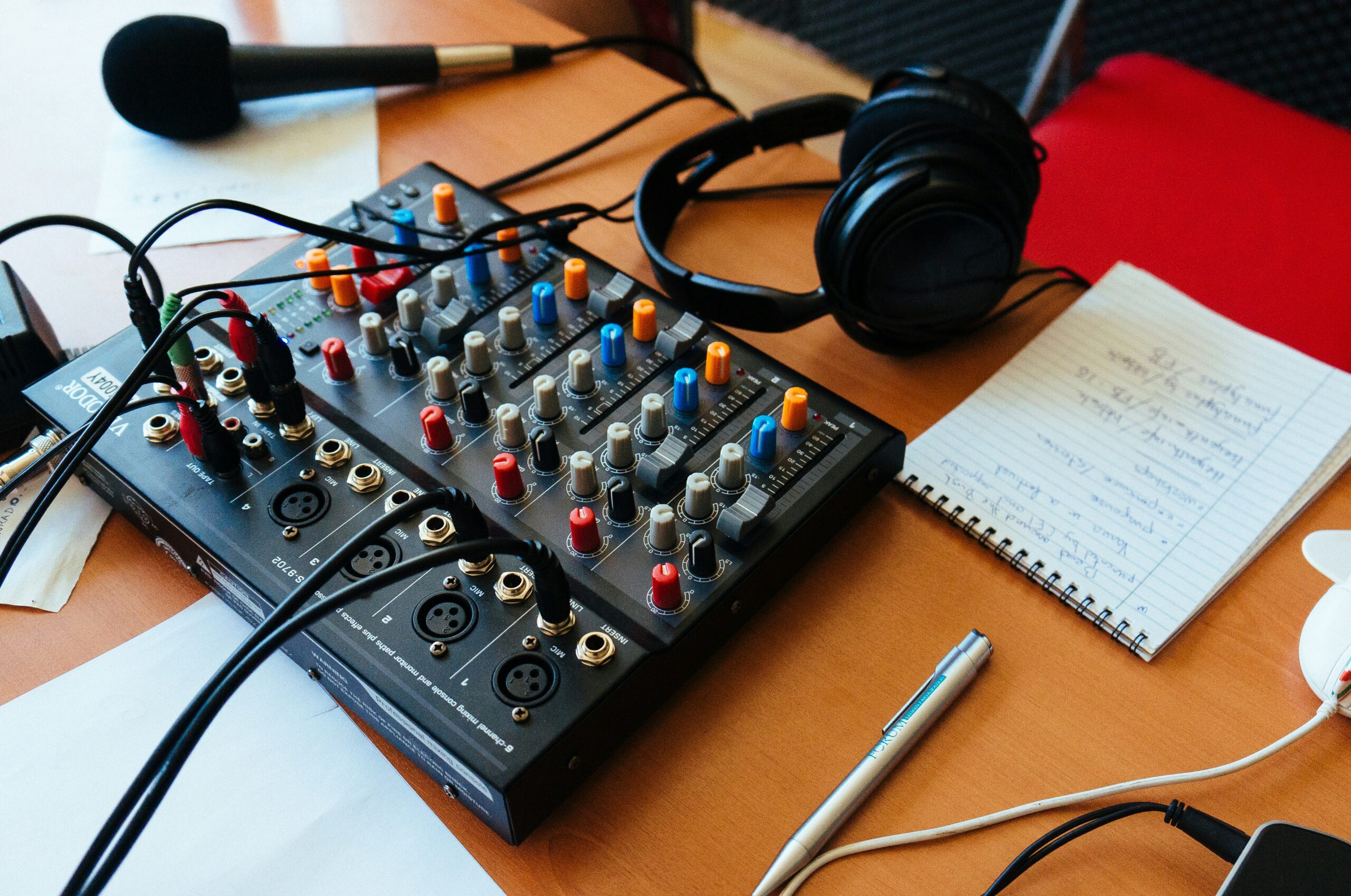
Audio engineering is a multifaceted field that requires technical expertise, creativity, and the correct tools. Whether you’re working in a recording studio, mixing live shows, or producing your tracks, having the right gear can make a world of difference in the quality of your work. This article will explore the essential tools every audio engineer needs to succeed.
Audio Interface
An audio interface bridges your microphone, instruments, and computer’s digital audio workstation (DAW). It converts analog signals into digital form and vice versa, ensuring that your recordings are clear and accurate. A high-quality audio interface will provide you with low latency and excellent sound quality, which are crucial for recording and mixing.
When selecting an audio interface, consider factors like the number of inputs and outputs, the quality of the preamps, and compatibility with your DAW. Some interfaces also come with built-in DSP processing, allowing real-time effects and monitoring without overloading your computer’s processing power. Your chosen interface will directly affect your work’s sound quality and efficiency.
Studio Monitors
Studio monitors are essential for an audio engineer because they accurately represent the working audio. Unlike consumer-grade speakers, studio monitors are designed to produce a flat, neutral sound that allows you to hear every detail of your mix. This ensures that your recordings translate well across different listening environments.
Investing in a pair of high-quality studio monitors can make a massive difference in the final output of your work. Look for monitors that offer clear midrange and a tight bass response, as these are often the most critical aspects of a mix. Room acoustics also play a significant role in how your monitors perform, so consider adding bass traps or diffusers to your studio to improve the overall sound.
Microphones
Microphones are essential for an audio engineer, especially when capturing vocals and instruments. The type of microphone you choose depends on the specific application. For example, a condenser microphone is ideal for capturing vocals due to its sensitivity and wide frequency range. On the other hand, dynamic microphones are often used for live sound or miking drums and guitar amps.
It’s also essential to have a variety of microphones for different recording scenarios. A versatile engineer will have microphones for specific purposes, such as ribbon mics for a vintage sound or shotgun mics for focused recordings. Pairing the right microphone with the right source is essential for achieving the best sound.
Digital Audio Workstation (DAW)
Your DAW is the software where all the magic happens. It’s the hub where you record, edit, and mix your audio, making it one of the most essential tools in an audio engineer’s toolkit. Several popular DAWs are available, such as Pro Tools, Logic Pro X, Ableton Live, and Cubase. The DAW you choose will depend on your preference, the type of projects you work on, and the features you need.
Look for a DAW with robust editing features, easy automation, and excellent support for third-party plugins. The right DAW will help you efficiently manage your projects and provide the tools to bring your creative ideas to life.
Headphones
A good pair of headphones is essential for an audio engineer, especially when tracking and mixing in environments where studio monitors aren’t available or practical. Headphones are often used to isolate specific elements of a recording, such as a vocalist’s mic, or to listen to mixes with more detail.
Closed-back headphones are ideal for tracking, preventing sound from leaking into the microphone. On the other hand, open-back headphones are more suited for mixing due to their more natural sound, which resembles that of studio monitors. High-quality headphones help you identify small details in your audio that might be missed on speakers.
Audio Cables and Connectors
A vast network of cables and connectors is required to link your equipment. They seem like simple accessories, but high-quality audio cables can significantly impact sound quality. Poor-quality cables can introduce noise, hum, or signal loss, interfering with your recordings and mixes.
Invest in durable, high-quality cables, such as balanced XLR cables for microphones and instruments, and TRS cables for line-level connections. Additionally, ensure you have the appropriate connectors and adapters for your gear, ensuring your signal chain is solid and free from unwanted interference.
Audio Effects and Plugins
Plugins are virtual tools that allow you to manipulate your audio in various ways. They come in many forms, including EQs, compressors, reverb units, and distortion effects. Some DAWs come with built-in plugins, but many audio engineers invest in third-party plugins to expand their sonic palette.
The proper collection of plugins can help you fine-tune your recordings, add creative effects, or fix problems that arise during the mixing process. For example, a good EQ plugin can help you carve out space in a mix, while a compressor can be used to control dynamics. Be sure to research and select plugins that suit your style and workflow.
Acoustic Treatment
While not technically a “tool” in the traditional sense, acoustic treatment is essential for achieving accurate sound in your studio. The goal of acoustic treatment is to manage reflections, resonances, and standing waves that can distort your perception of sound. Bass traps, diffusers, and acoustic panels can help you achieve a balanced and controlled listening environment.
Proper acoustic treatment can be just as important as investing in high-end equipment. The appropriate treatment will allow you to hear your mixes more accurately, ultimately leading to better-sounding recordings and mixes.
Audio engineering requires more than talent and creativity—it also demands the right tools. You can produce professional-grade recordings and mixes by investing in quality equipment like audio interfaces, microphones, studio monitors, and headphones. Remember that audio engineering is an ongoing learning process; the right tools are just one part of the equation. As technology evolves, so will the tools available to audio engineers, so always stay informed and adapt to new trends.